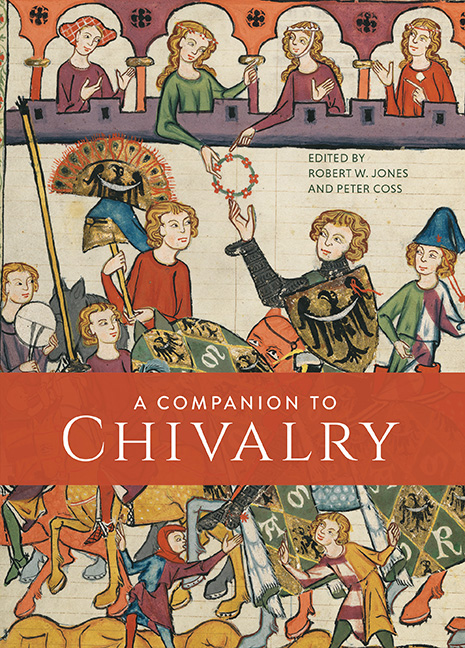Book contents
- Frontmatter
- Contents
- List of Illustrations
- List of Contributors
- Introduction
- 1 The Origins and Diffusion of Chivalry
- 2 The Organisation of Chivalric Society
- 3 The Secular Orders: Chivalry in the Service of the State
- 4 The Military Orders
- 5 Marshalling the Chivalric Elite for War
- 6 Chivalric Violence
- 7 Chivalry in the Tournament and Pas d'Armes
- 8 Heraldry and Heralds
- 9 Arms and Armour
- 10 Constructing Chivalric Landscapes: Aristocratic Spaces Between Image and Reality
- 11 Gendered Chivalry
- 12 Chivalric Literature
- 13 Manuals of Warfare and Chivalry
- 14 The End of Chivalry? Survivals and Revivals of the Tudor Age
- 15 Chivalric Medievalism
- Select Bibliography
- Acknowledgements
- Index
4 - The Military Orders
Published online by Cambridge University Press: 24 October 2019
- Frontmatter
- Contents
- List of Illustrations
- List of Contributors
- Introduction
- 1 The Origins and Diffusion of Chivalry
- 2 The Organisation of Chivalric Society
- 3 The Secular Orders: Chivalry in the Service of the State
- 4 The Military Orders
- 5 Marshalling the Chivalric Elite for War
- 6 Chivalric Violence
- 7 Chivalry in the Tournament and Pas d'Armes
- 8 Heraldry and Heralds
- 9 Arms and Armour
- 10 Constructing Chivalric Landscapes: Aristocratic Spaces Between Image and Reality
- 11 Gendered Chivalry
- 12 Chivalric Literature
- 13 Manuals of Warfare and Chivalry
- 14 The End of Chivalry? Survivals and Revivals of the Tudor Age
- 15 Chivalric Medievalism
- Select Bibliography
- Acknowledgements
- Index
Summary
The military orders are best known as knights: the Knights Templar, Knights Hospitaller, Teutonic Knights, Knights of Santiago and so on. Their houses resembled knightly residences, castles or manor houses, and their leading officials used heraldic insignia. Yet during the middle ages the majority of their members were not knights but ‘servientes’ or ‘serjans’ – ‘serving brothers’ or ‘sergeant–brothers’– who might be warriors but did not hold knightly rank. The bulk of their recruits came not from the high nobility but from lesser knightly, gentry and burgess families. These Latin Christian institutions also included priests and sisters among their full members and married men and women of every social rank among their associates. Arguably, then, they were not primarily chivalric, but resembled other new religious movements of the twelfth and early thirteenth centuries such as the regular canons and friars – except that most of their members were not priests.
Nevertheless, the knight–brothers were always the most visible and bestknown group within these orders. Contemporaries called them ‘a new knighthood’ and claimed that they had restored ‘the order of knights’ to its proper role in society. It is not clear, however, whether their impact on the development of chivalry was as substantial as such assertions suggest.
In his study Chivalry, Maurice Keen considered how it was influenced by crusading and the military orders that arose from the crusading movement. The military orders offered a form of knighthood that fused ecclesiastical and military ideals but, in Keen's view, they were too monastic and ecclesiastical to have had a significant effect on secular knighthood. The military orders did generalise ‘the idea of knighthood as an order’. Yet, tied to the three religious vows of poverty, chastity and obedience, they were cut off from some of the central themes of chivalry, such as the cult of love and the ideal of the solitary knight seeking personal honour, the hero–figure of the secular chivalric romances.
The fictional literature of the twelfth to the sixteenth centuries presented the military orders as an example of Christian knighthood, but mainly to those outside Christendom. Although writers and audiences approved of their vocation, chivalric literature was primarily interested in secular knighthood, depicting it as created by God and pleasing to him without need of ecclesiastical trappings.
- Type
- Chapter
- Information
- A Companion to Chivalry , pp. 69 - 84Publisher: Boydell & BrewerPrint publication year: 2019



